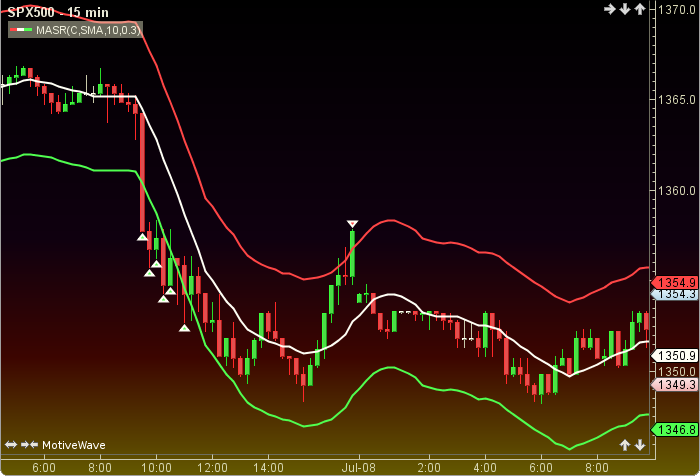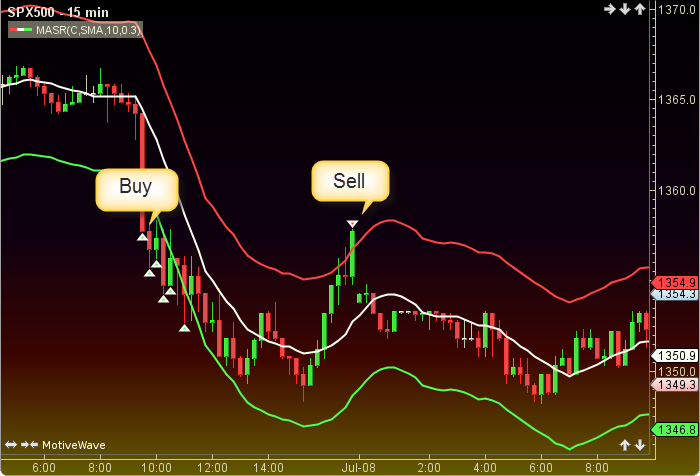Moving Average Support Resistance
Moving Average Support Resistance was authored by Dennis L. Tilley in the Stocks and Commodities Magazine 09/1998. A simple moving average is multiplied and divided by a support resistance factor. The user may change the input (close), method (SMA), period length and factor. This indicator’s definition is further expressed in the condensed code given in the calculation below.

How To Trade Using Moving Average Support Resistance
Adjust the support/resistance factor to control the quantity and quality of the trading signals. If the price is above the top band a sell signal will be generated. Conversely, if the price is below the bottom band a buy signal will be given.

How To Access in MotiveWave
Go to the top menu, choose Study>Bands>Moving Average Support Resistance
or go to the top menu, choose Add Study, start typing in this study name until you see it appear in the list, click on the study name, click OK.
Important Disclaimer: The information provided on this page is strictly for informational purposes and is not to be construed as advice or solicitation to buy or sell any security. Please see our Risk Disclosure and Performance Disclaimer Statement.
Calculation
//input = price, user defined, default is closing price
//method = moving average = ma, user defined, default is SMA
//period = user defined, default is 10
//fac = percent factor = user defined, default is 2
//index = current bar number
masr = ma(method, index, period, input);
suppLevel = (1 + (fac / 100));
Plot1: top = masr * suppLevel;
Plot2: bott = masr / suppLevel;
//Signals
price = input[index];
sell = price moreThan top;
buy = price lessThan bott;
